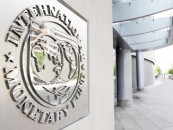Researchers identify erectile dysfunction gene
Study shows men with the said gene variant are more at risk

PHOTO: MEN'S HEALTH
Men who have a copy of this variant have a 26 per cent increased risk of facing erectile dysfunction compared to the average population, said the findings in the Proceedings of the National Academy of Sciences.
Health promise: Capital to get 4 new hospitals
Those with two copies of the variant face a 59 per cent higher risk, according to geneticist Eric Jorgenson, the study's lead author.
The results were based on a database of 36,649 patients of Kaiser Permanente Northern California.
The average population risk is of one in five men, according to a 2007 study in the United States, but the ratio increases sharply with age.
About a third of erectile dysfunction risk is linked to genetic factors.
According to the new study, the genetic variant Jorgenson and his colleagues identified alone accounts for two per cent of the risk.
Quality healthcare: Health insurance card expanded to entire country
Obesity, diabetes and cardiovascular disease all have genetic components and are also linked to erectile dysfunction.
"We know that there are other factors for ED including smoking, obesity, diabetes and cardiovascular disease, and men who address those factors can reduce their risk of ED," Jorgenson told AFP.
"Because the region that we identified in the human genome appears to act independently of those risk factors, developing new treatments that target the variation in this genetic location has the potential to help those men who do not respond to current treatment."
He noted that about 50 per cent of men do not respond to erectile dysfunction treatments currently available.
The study's results were validated by studying a second database in Britain.



















COMMENTS
Comments are moderated and generally will be posted if they are on-topic and not abusive.
For more information, please see our Comments FAQ